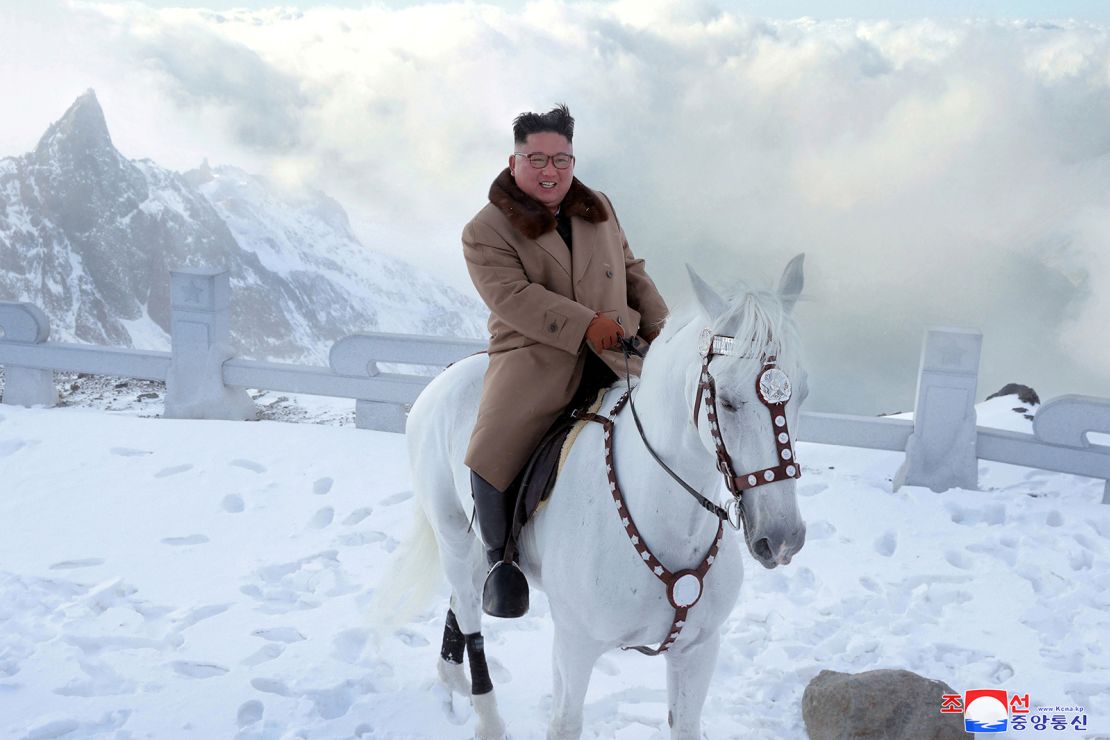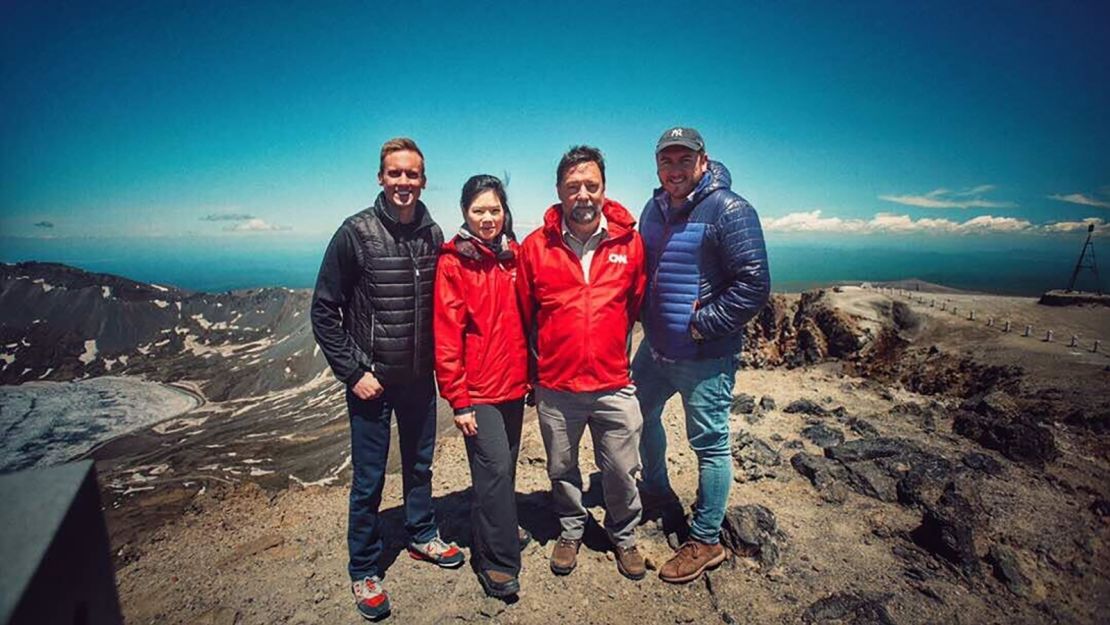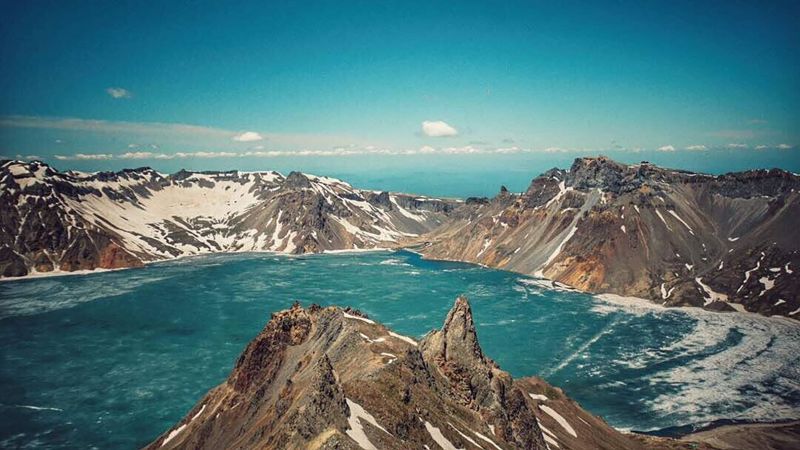CNN
—
High atop the Korean Peninsula, past military checkpoints and bumpy dirt roads in one of the world’s most secretive countries, rises a volcano and deep crater lake steeped in symbolism.
Mount Paektu, an active stratovolcano straddling the border of North Korea and China, is the highest peak on the Korean peninsula and lies at the heart of North Korea’s foundation myth.
The North Korean side of the mountain was recently designated a UNESCO Global Geopark, according to South Korean news agency Yonhap, marking North Korea’s first natural site to be included on the list.
The executive board of the United Nations Educational, Scientific and Cultural Organization (UNESCO) recognized the site for its “impressive natural and cultural heritage,” including its volcanic eruptions and geological features, in a meeting held in February.
But to grasp the significance, you have to stand at the edge of Lake Chon — a caldera around 7,200 feet above sea level, formed by a massive eruption more than a thousand years ago — and feel the wind cut across your face.
I did just that in June 2017, as one of the few Western journalists to reach Paektu’s summit from the North Korean side. The trip, sanctioned and closely monitored by Pyongyang, offered rare access — and a window into how the regime elevates this mountain into something almost divine.
A map of Mount Paektu located on the North Korea and China border
The mountain was the birthplace of Dangun, the mythical founder of the first Korean kingdom, according to North Korean legend.
Kim Il Sung, North Korea’s founder and Kim Jong Un’s grandfather, purportedly used the mountain as a hideout when fighting against the Japanese occupation for independence in the 1940s. State media often refers to the eldest Kim in reference to the mountain, using titles like the “legendary hero of Paektu.”
North Korea claims Kim Jong Il, the late leader and father of Kim Jong Un, was born near Paektu’s summit. Guides showed me a wooden cabin where, they say, snow melted and the sun broke through, flowers bloomed, and a new star appeared in the sky to mark his birth.
There’s no historical evidence for this and many scholars believe Kim was likely born in Russia, but the story is told without a hint of doubt throughout North Korea. Paektu isn’t just a mountain — it’s a national altar.
The mountain has been widely used by the Kim dynasty to showcase the family’s own lore and deification. Its peaks have been emblazoned on the country’s national emblem and its name has been lent to everything from rockets to power stations and, occasionally, the country itself.

North Korean society prizes racial purity and state propaganda glorifies the Kim family for their “Mount Paektu bloodline,” which is said to be a noble and heroic lineage tied to the ancient legendary kings of the Korean peninsula.
“This is the soul of Korea’s revolution,” a guide told me, as North Korean pilgrims stood quietly nearby, some in tears, believing they were on hallowed ground.
Kim Jong Un has often visited the sacred mountain, usually before major shakeups — like the 2013 execution of his uncle and the 2016 nuclear test.
In 2018, he brought then-South Korean President Moon Jae-in up to the summit in a rare moment of unity. Moon, who stood at the top clutching Kim’s hand alongside their wives, called the visit the realization of a dream.
“I wondered if I was ever going to have a chance (to come here) but my wish has come true,” Moon said. For Koreans on both sides of the border, reaching the peak has long been a rite of passage, but access has been closed off to most living in South Korea.
In 2019, North Korean state media released photographs of Kim riding on a white horse up the sacred mountain on at least two separate occasions amid tensions on the peninsula.
In its recognition, the UNESCO executive board cited Paektu’s volcanic legacy, valleys shaped by glacial erosion, and rocky plains as part of its global significance.
It also noted the “millennial eruption” that occurred on Mount Paektu more than a thousand years ago in 946 CE — one of the most powerful volcanic eruptions in recorded history.
Currently, there are more than 200 geoparks in 49 countries, according to the organization. UNESCO Global Geoparks are recognized as “single, unified geographical areas where sites and landscapes of international geological significance are managed with a holistic concept of protection, education and sustainable development.”
Last year, the UNESCO board designated the Chinese side of the mountain as a global geopark under its Chinese name, Changbaishan.
North Korea sought the UNESCO geopark designation in 2019, a year before China, but an on-site inspection of the site in North Korea was delayed due to the Covid-19 pandemic.
With the designation, Pyongyang may now try to rebrand Paektu as a geotourism destination — promoting its natural wonders as well as Korean mythology.
Back in 2017, the journey to Paektu took us through remote farming villages where children ran away from our cameras — some likely having never seen a foreigner. In Samjiyon, the closest town, monuments to Kim Il Sung dot the landscape, and buildings bear scars from battles with Japanese occupiers.

Life near Paektu is rural and sparse. But the people we met spoke with quiet pride — of their history, their home, and the belief that they live in a place that matters.
With this UNESCO recognition, Mount Paektu is now not just a national symbol, but recognized as a site of global geological value. Whether that leads to more engagement or remains another tool for Pyongyang’s narrative is unclear.
For now, the mountain stands, its slopes cloaked in clouds and its stories passed down through generations. And if you ever find yourself at the summit, staring into Lake Chon and breathing in the frigid air, you might understand why so many, North and South, believe it holds the soul of Korea.

